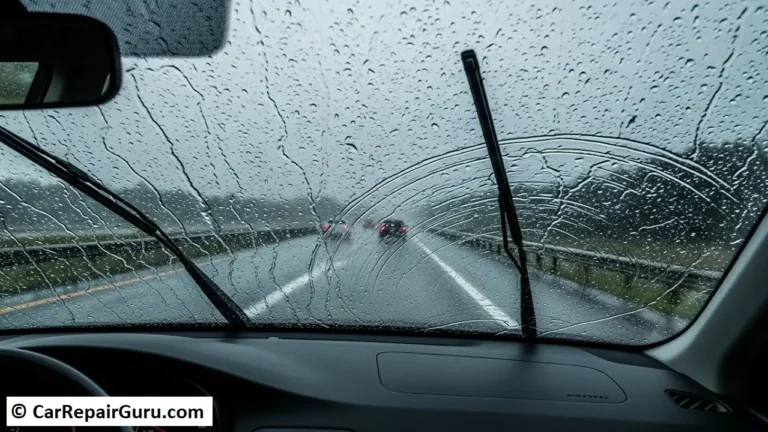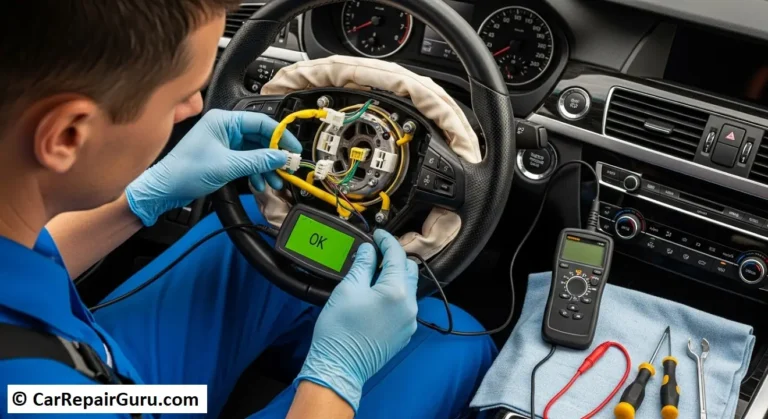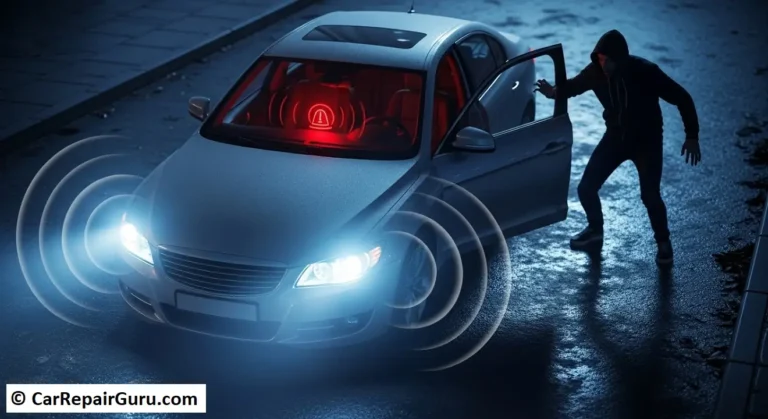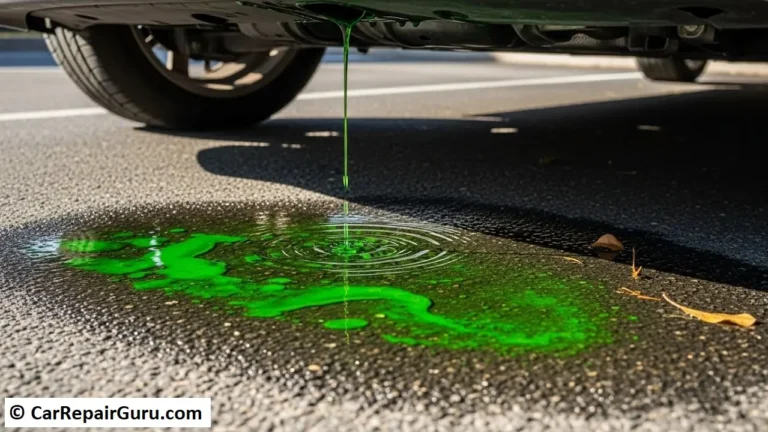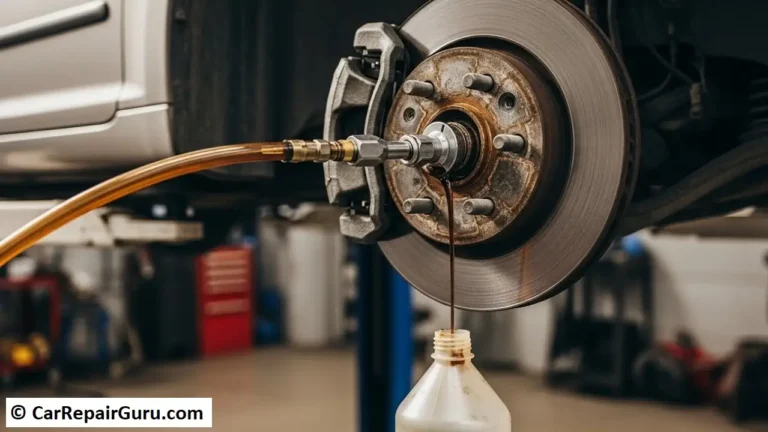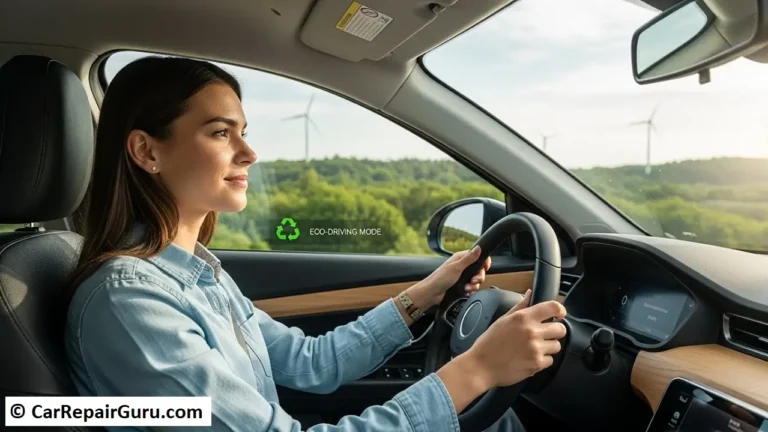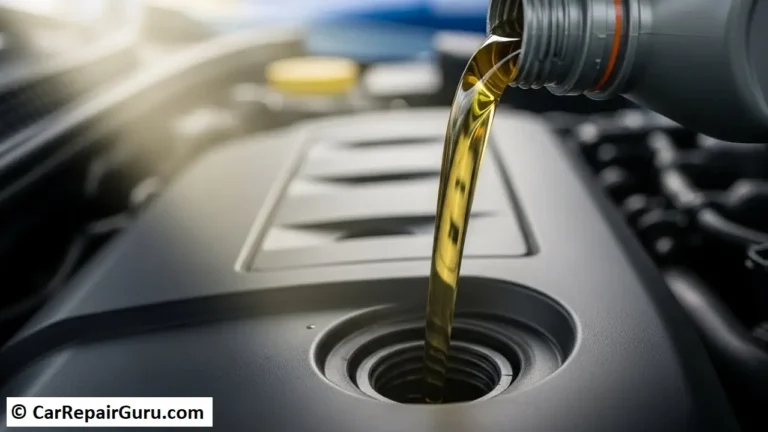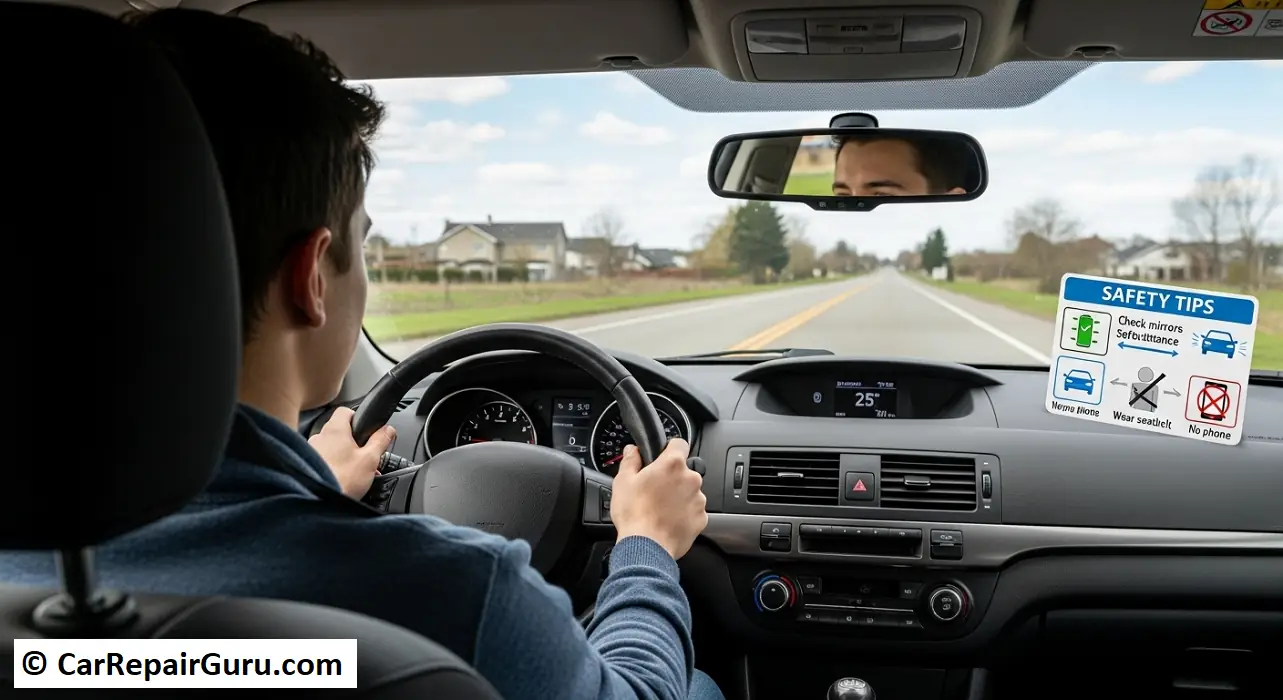
That feeling is unforgettable. The plastic card in your hand isn’t just a license; it’s a key to freedom, independence, and a whole new chapter of your life. But alongside that incredible excitement, there’s often a quiet hum of nervousness—and for good reason. Getting behind the wheel is a major responsibility.
According to the CDC, car crashes are a leading cause of death for teenagers in the United States. That’s a sobering statistic, but it’s not meant to scare you. It’s meant to empower you. By understanding the risks and committing to smart habits from day one, you can protect yourself, your passengers, and everyone else on the road.
This isn’t just another boring list of rules. This is your complete guide to becoming a confident, skilled, and—most importantly—safe driver. We’ll cover everything from the non-negotiable rule of avoiding distractions to what to do when things go wrong. Let’s get you ready for a lifetime of safe driving.
The Cardinal Rule – Eliminate All Driving Distractions
If you only take one thing away from this guide, let it be this: distracted driving is the single greatest danger you face as a new driver. Your brain can’t multitask as well as you think it can, especially when you’re still building driving experience. A two-second glance away from the road is all it takes to cause a life-altering accident. Mastering the art of focus is the most critical driving skill you will ever learn.
1. The Digital Distraction – Your Phone
Your phone is the number one enemy of safe driving. Texts, notifications, and calls are designed to grab your attention, and that’s the last thing you need behind the wheel. The only acceptable approach is a zero-tolerance one.
Actionable Steps for Every Drive:
- Out of Sight, Out of Mind: The best place for your phone is where you can’t reach it—the glove box, the center console, or your backpack in the back seat.
- Activate “Do Not Disturb”: Both iPhones and Androids have a “Do Not Disturb While Driving” mode. This automatically silences notifications and can send auto-replies to texts. Turn it on before you put the car in gear.
- Set It and Forget It: Program your GPS, choose your playlist, or find your podcast before you start moving. Once you’re driving, your only job is to drive.
2. The Passenger Problem
Driving with friends is one of the best parts of having a license, but it can also be one of the riskiest. Studies show that a new teen driver’s fatal crash risk increases significantly with each additional teen passenger in the vehicle. It’s your car and your responsibility, so you need to be the one to set the rules.
Don’t be afraid to say, “Hey, I need to focus on the road right now,” or ask a friend to manage the navigation or music for you. A true friend will respect your commitment to safety.
3. The In-Car Distractions
It’s not just about your phone. Many other seemingly harmless actions can take your focus off the road:
- Eating or drinking
- Fiddling with complex radio or climate controls
- Searching for something in your bag or on the floor
- Applying makeup or fixing your hair in the mirror
The rule is simple: keep your hands on the wheel, your eyes on the road, and your mind on the drive.
Know the Rules of the Road (Beyond the Driving Test)

You passed the written test, but real-world driving presents situations that are more complex than a multiple-choice question. Understanding these key traffic rules for new drivers will help you navigate tricky situations with confidence.
4. Right-of-Way is Given, Not Taken
Never assume another driver will yield to you, even if you technically have the right-of-way. Always drive defensively. Here are a few common points of confusion:
- 4-Way Stops: The first vehicle to arrive at the intersection goes first. If two vehicles arrive at the same time, the driver on the right has the right-of-way.
- Uncontrolled Intersections: When there are no signs or signals, treat it like a 4-way stop. Yield to any cars already in the intersection and to the car on your right if you arrive simultaneously.
- Pedestrians: Pedestrians in a crosswalk always have the right-of-way. Be vigilant.
5. The “Move Over” Law
This is a critical safety law in all 50 states. When you see a police car, ambulance, fire truck, or tow truck stopped on the side of the road with its emergency lights flashing, you are legally required to slow down and move over one lane if it is safe to do so. This gives first responders a safe buffer to work.
6. School Buses and School Zones
There is zero room for error here.
- Flashing Yellow Lights on a Bus: This means the bus is preparing to stop. You should slow down and be ready to stop as well.
- Flashing Red Lights on a Bus: You must stop. It doesn’t matter which side of the road you’re on unless there is a physical barrier or median dividing the highway. Wait until the lights stop flashing and the stop arm is retracted before moving.
- School Zones: When you see signs for a school zone, pay close attention to the reduced speed limit, especially during active hours.
7. Use Your Turn Signals
Your turn signal is your only way of communicating your intentions to other drivers. It’s not a suggestion; it’s an essential piece of safety equipment. Get in the habit of signaling for every turn, every lane change, and even when pulling into or out of a parking spot. Signal early to give other drivers plenty of time to react.
Master Basic Car Maintenance (Know Your Vehicle)
You don’t need to be a mechanic, but a safe driver is an informed driver. Understanding the basics of your car helps you spot problems before they become dangerous emergencies. Think of it as a quick health checkup for your vehicle. Here’s a simple checklist for basic car maintenance for beginners.
8. The Weekly Tire Check
Your tires are the only part of your car that actually touches the road. Their condition is critical.
- Pressure: Low tire pressure can lead to poor handling and even blowouts. Find the correct pressure (PSI) for your tires on the sticker inside the driver’s side door jamb—not on the tire itself. Check the pressure once a week with a simple gauge.
- Tread: Good tread helps your car grip the road, especially in rain or snow. Use the “penny test”: stick a penny into the tire tread with Lincoln’s head upside down. If you can see the top of his head, your treads are too worn and it’s time for new tires.
9. Keep Your Fluids in Check
Your car relies on several key fluids to run smoothly. You can easily check the two most important ones:
- Engine Oil: Park on a level surface and wait for the engine to cool. Pull out the dipstick, wipe it clean, reinsert it fully, and pull it out again. The oil level should be between the “Full” and “Add” marks.
- Windshield Washer Fluid: This is vital for visibility. Look for a reservoir with a windshield/water symbol on the cap. If it’s low, simply top it off with washer fluid from any auto parts store.
10. Lights and Wipers
Once a week, do a quick “circle of safety” walk-around. Turn on your car and check that your headlights, taillights, brake lights (have a friend help), and turn signals are all working. Check your windshield wipers for signs of cracking or stiffness. If they leave streaks, it’s time to replace them.
Quick Check Infographic Idea:
- Tires: Check Pressure & Tread
- Oil: Check Level on Dipstick
- Wipers: Check for Streaks
- Lights: Check All Bulbs
- Washer Fluid: Top It Off
How to Handle Emergencies Smartly
Even the safest drivers can encounter unexpected problems. The key is to be prepared. Knowing what to do in a car emergency beforehand allows you to stay calm and act decisively instead of panicking.
11. If You’re in a Minor Accident
A fender bender can be jarring, but following these steps will protect you.
- Stop Safely: Immediately pull over to a safe spot away from traffic, like the shoulder or a nearby parking lot. Turn on your hazard lights.
- Check for Injuries: Check yourself and your passengers. Then, if it’s safe to do so, check on the occupants of the other vehicle.
- Call 911: Even for a minor accident, it’s wise to call the police to file an official report, which is crucial for insurance claims.
- Exchange Information: Calmly exchange the following with the other driver: names, addresses, phone numbers, insurance company names, and policy numbers.
- Document Everything: Use your phone to take pictures of the damage to both cars, the license plates, and the overall scene.
- Don’t Admit Fault: Stick to the facts of what happened. Do not apologize or say “it was my fault,” as this can be used against you later.
12. If You Get a Flat Tire
You’ll likely feel a “thump-thump-thump” or a sudden pull to one side. Do not slam on the brakes. Grip the steering wheel firmly, take your foot off the accelerator, and coast to a stop in a safe, flat location far from traffic. Turn on your hazard lights and call for roadside assistance.
13. If Your Car Overheats
If you see the temperature gauge spike into the red or steam coming from under the hood, act quickly. Turn on your car’s heater to full blast—this pulls heat away from the engine. Pull over safely, turn off the engine, and wait. Do not attempt to open the radiator cap, as the coolant is dangerously hot. Call for help.
14. Build Your Emergency Kit
A small kit in your trunk can be a lifesaver. Your new driver checklist should include:
- Jumper cables
- A basic first-aid kit
- A powerful flashlight with extra batteries
- A portable phone charger or power bank
- Reflective triangles or flares
- Bottled water and non-perishable snacks
The Final Keys – Practice, Patience, and Staying Calm

Becoming a safe driver is a journey, not a destination. Your skills and judgment will grow over time. The most important assets you have are your attitude and your mindset.
15. The Power of Progressive Practice
Confidence comes from experience. Don’t try to tackle a six-lane highway during rush hour on your first day. Build up to it.
- Level 1: The Basics: Start in an empty parking lot to get a feel for the car’s acceleration, braking, and turning radius.
- Level 2: Quiet Streets: Drive around your neighborhood during the day to practice staying in your lane and handling stop signs.
- Level 3: Moderate Challenges: Try driving on busier roads with more traffic, at night, and in light rain.
- Level 4: Advanced Skills: Once you feel comfortable, practice merging onto highways and navigating denser city traffic, preferably with an experienced driver at first.
16. How to Stay Calm Under Pressure
Feeling overwhelmed is normal. If you get honked at, or if traffic becomes too intense, remember to breathe. It’s okay to take the next exit and pull into a parking lot to collect yourself. A five-minute break is always better than a panicked decision. Your safety is more important than being on time.
17. Dealing with Aggressive Drivers
You will encounter aggressive drivers. The only winning move is not to play. This is a core part of defensive driving. Do not engage, make eye contact, or retaliate with your own horn or gestures. Create distance by slowing down or safely changing lanes to let them pass. Your ego is not worth the risk.
Your Journey to a Lifetime of Safe Driving
Earning your driver’s license is a milestone worth celebrating. By embracing these safety tips for new drivers, you are taking control of your well-being and the well-being of others.
Remember the core themes: stay focused by eliminating distractions, be prepared by knowing your car and how to handle emergencies, and be patient with yourself as you practice and build confidence. Driving is a skill that will serve you for the rest of your life. Make the commitment today to be a smart, responsible, and safe driver on every trip you take.
Share this guide with a new driver you care about! What’s your #1 safety tip? Leave it in the comments below.
Frequently Asked Questions for New Drivers
What is the single most important safety tip for new drivers?
The most critical tip is to eliminate all distractions, especially your cell phone. Put it completely out of reach before you start driving to keep 100% of your focus on the road. This one habit is the best way to prevent an accident.
How can a new driver feel less nervous behind the wheel?
Overcome driving anxiety with progressive practice in low-stress environments. Start in empty parking lots and quiet streets to build foundational skills. Gradually advance to busier roads as your confidence naturally grows with experience.
What is the 3-second rule for new drivers?
The 3-second rule ensures a safe following distance. When the car ahead passes an object (like a sign), start counting; it should take you at least three full seconds to pass that same object. In bad weather, increase this to four or five seconds.
What are the most common mistakes new drivers make?
The most common mistakes are speeding, following other cars too closely, and being distracted. These three errors significantly reduce your reaction time. Consistently managing your speed, distance, and focus is key to staying safe.
What should every new driver have in their car?
Every new driver should have a car emergency kit in their trunk. Key items include jumper cables, a first-aid kit, a flashlight, and a portable phone charger. Being prepared for a simple breakdown provides invaluable peace of mind.
